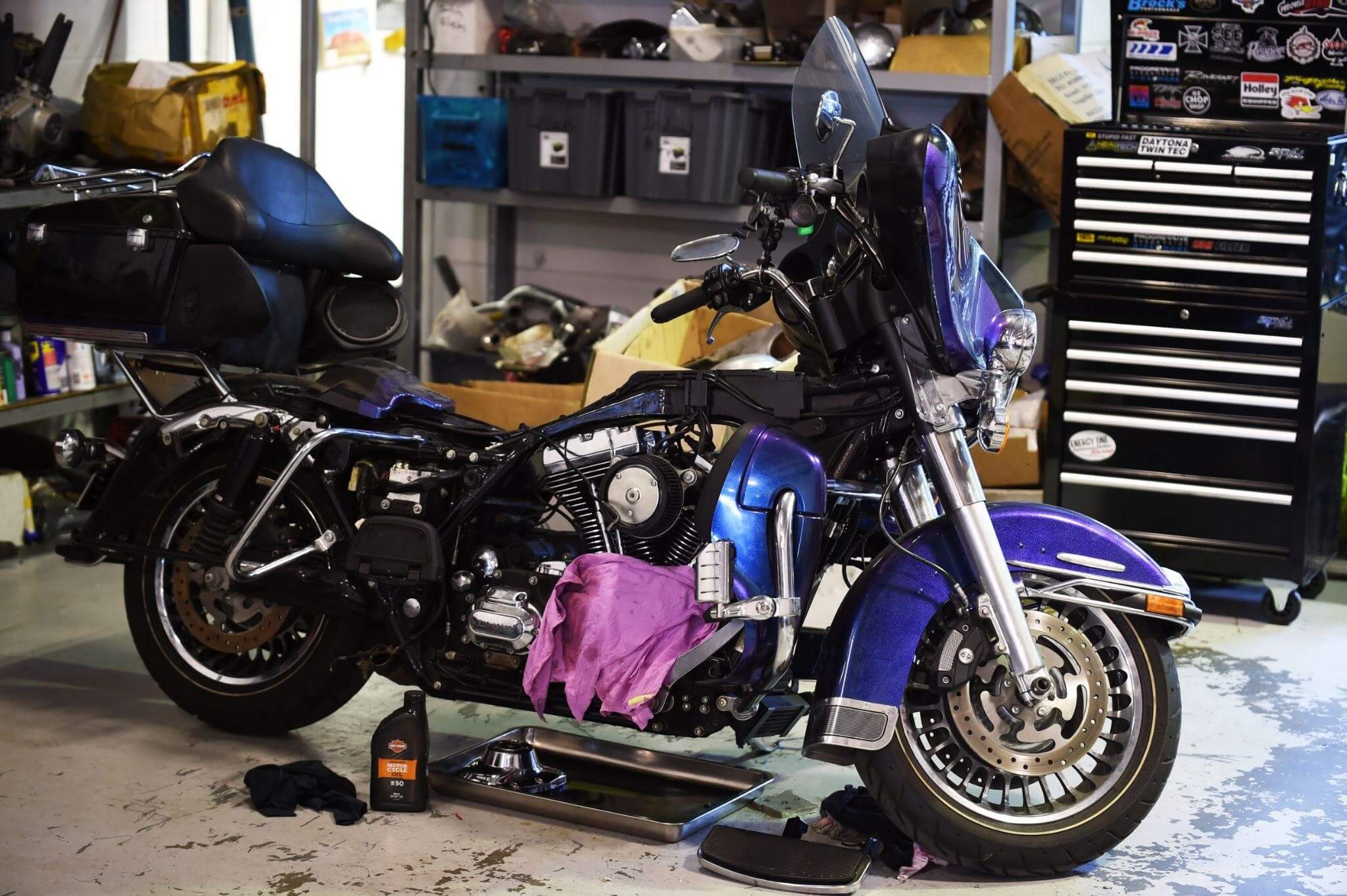No doubt you’ve heard of “bleeding your brakes”, whether in regards to motorbikes or cars. But if you’ve never actually done it, you might wonder what this means and why it matters. Put simply, bleeding your brakes means releasing trapped air and old fluid from your braking system, and it’s typically done before you change your motorcycle brake fluid. Bleeding motorcycle brakes expel air bubbles and contaminants from your braking system so that your bike continues to perform at its best.
Braking fluid transfers force into pressure in hydraulic braking systems. It’s the potent mix of chemicals that brings the force of your foot on your pedals to the pistons on your wheels, bringing your bike to a stop when you need it. But over time, brake fluid absorbs water which boils under the impact of hard braking, leading to brake fading and failure.
While it’s important to change your brake fluid regularly (some say at least every two years), it’s also a wise idea to check the brake fluid levels on your motorcycle regularly in case of issues like contamination, overheating and air ingress (air leaking in through worn seals etc.).
Checking the brake fluid levels on your motorcycle, bleeding your brakes and changing your motorcycle brake fluid when necessary can save you a world of hurt out there on the road. Brake fluid gone bad can lead not only to alarming noises like grinding and squealing, but to reduced braking performance, brake fade and leaks, among other problems.
Keep an eye out for the common signs that you need to change your motorcycle brake fluid, like discolouration, impaired performance and sponginess in the pedal or lever. When you can see it’s the right time, this is how to bleed and to change your motorcycle brake fluid effectively.
Signs Your Motorcycle Brake Fluid Needs To Be Changed
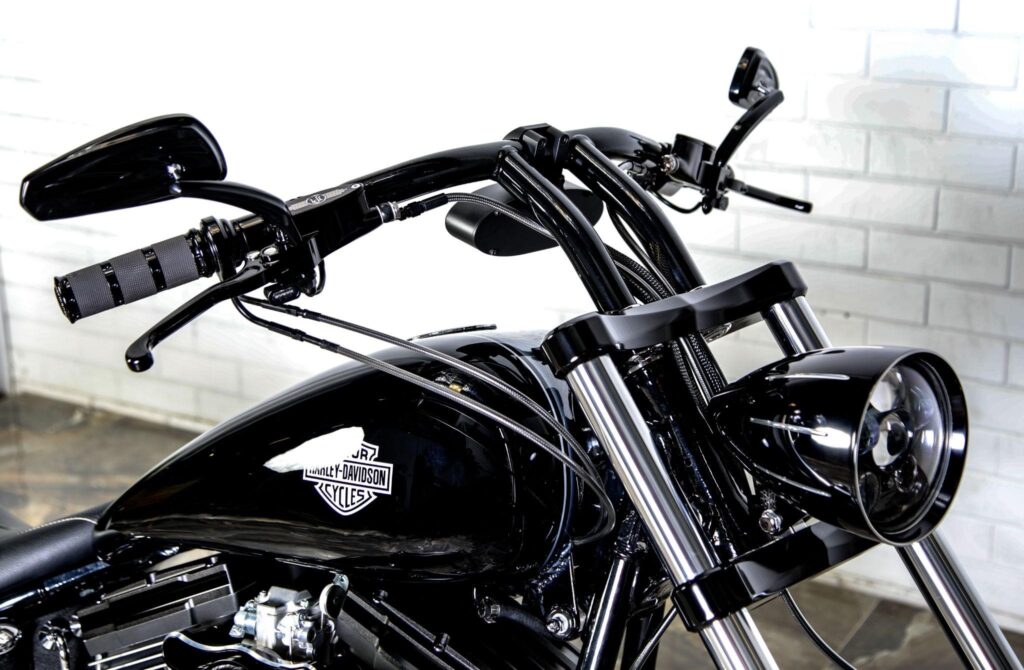
How can you tell when it’s time to change your motorcycle brake fluid? Here are some signs that the brake fluid in your bike is low, contaminated or in need of replacement:
The brakes aren’t responding the way they usually do
You may experience diminished braking capacity or brake fade, where the fluid in your brakes overheats and leads to reduced braking power.
Your brake pedal feels soft or spongy
Sometimes air in the brake pedal or brake system can absorb moisture, leading to a soft or spongy feel. This usually goes hand in hand with the performance of your brakes suffering.
Colour changes
Most brake fluid is clear or has a slightly yellow tinge. Noticeably dark or discoloured brake fluid is usually contaminated or degraded.
Strange noises
Contaminated brake fluid increases the wear and tear on brake parts, leading to squeaking, clattering or grinding sounds.
Low fuel
One way to check for certain is to look in your motorcycle’s fuel reservoir. If the brake fluid level is below the ‘low’ mark, that’s a sure sign you need fresh fuel.
Changing your motorcycle’s brake fluid often starts with bleeding your motorcycle’s brakes. This is a simple process, but there’s an art to doing it well.
How to Bleed Your Motorcycle Brakes
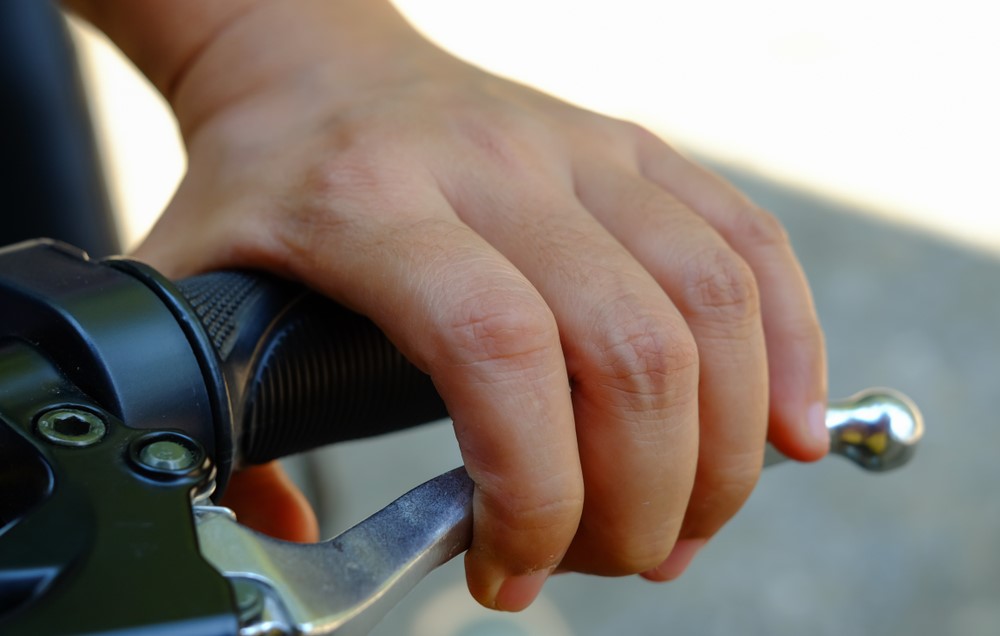
Here’s a simple guide to bleeding your motorcycle’s brakes. Remember that the process can vary depending on the make and model of your bike. For best results, consult the manufacturer’s guide or take your bike to a professional.
In a bike with fluid in it, the bleeding process is pretty straightforward: pump up the brake for pressure, open the bleeder to expel air (but don’t release the brake), close the bleeder and allow the lever or pedal to return to its resting position.
You only need a handful of materials: brake fluid that’s compatible with your motorcycle, a brake bleeding kit or helper, a wrench for opening and closing the valve and a container to catch the old fluid.
Before you begin, make sure the motorbike is on a stable surface. Cover up the paintwork on your bike because brake fluid can do serious damage. Unless your manual says differently, start bleeding from the farthest point of the master cylinder. If it’s a dual disc front brake, that means the left front calliper.
Attach your bleeding kit, which usually includes a container and hose, to the bleeder valve. Pump the brake lever several times and then hold it down. This is easy if you have an assistant – if not, use a method such as a bungee cord to secure the bike in place. Using a wrench, open the bleeder valve to release fluid and air bubbles through the hose into the container. Keep an eye on the fluid level and refill with fresh fluid to keep air out of the system.
Lastly, make sure you always choose a brake fluid that your bike can handle.
How to Replace Motorcycle Brake Fluid
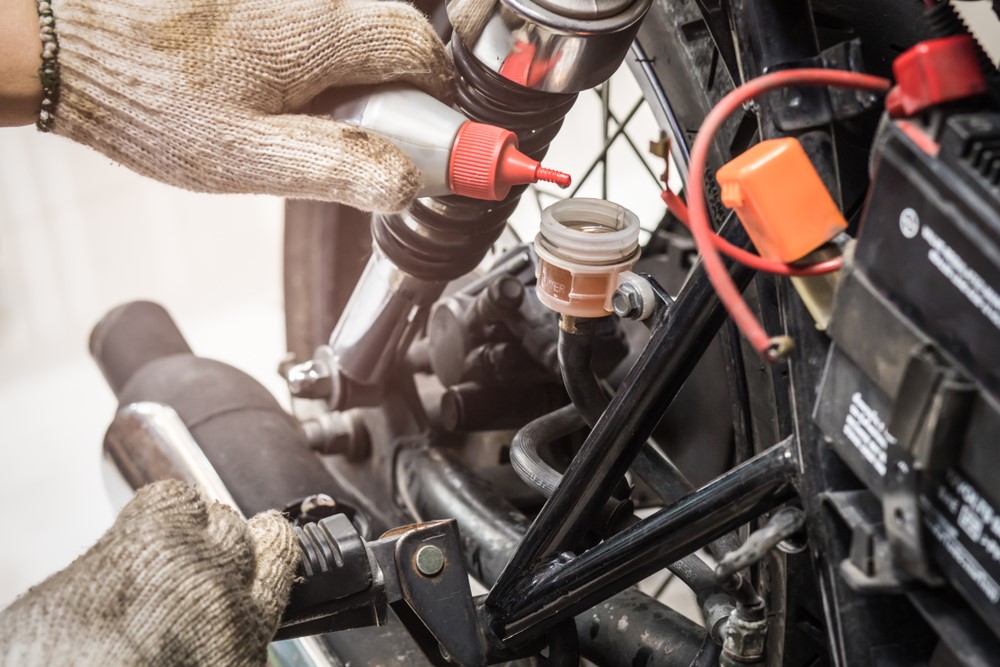
For most riders, changing your motorcycle brake fluid is recommended every two years, and there are many good reasons why.
If you have the tools and the skills, changing your motorcycle’s brake fluid can be a relatively easy and affordable process. You may already know when it’s time for a change, and if not, it’s easy to check the brake fluid levels in your motorcycle. It’s important to protect your paintwork, the same as with bleeding your motorcycle brakes. It pays to wear protective gloves as well.
Remove the reservoir lid slowly so that the diaphragm doesn’t drop off. Make sure you choose the right size spanner for the bleed nipple and take off the rubber grommet that protects the nipple. Place the ring spanner on the nipple so you can loosen it freely. Crack the nipple while applying pressure to the brake lever, then tighten the nipple and let go of the lever. Repeat the process until you see a clear stream of fluid in the tube. Pump it through and pause each time to tighten the nipple. As each pump of the lever expels old fluid, add fresh fluid to the master cylinder.
If you need help changing your motorcycle brake fluid, there’s no shame in taking your bike to a workshop and calling upon a pro.
Motorcycle Servicing at Taverner Motorsports
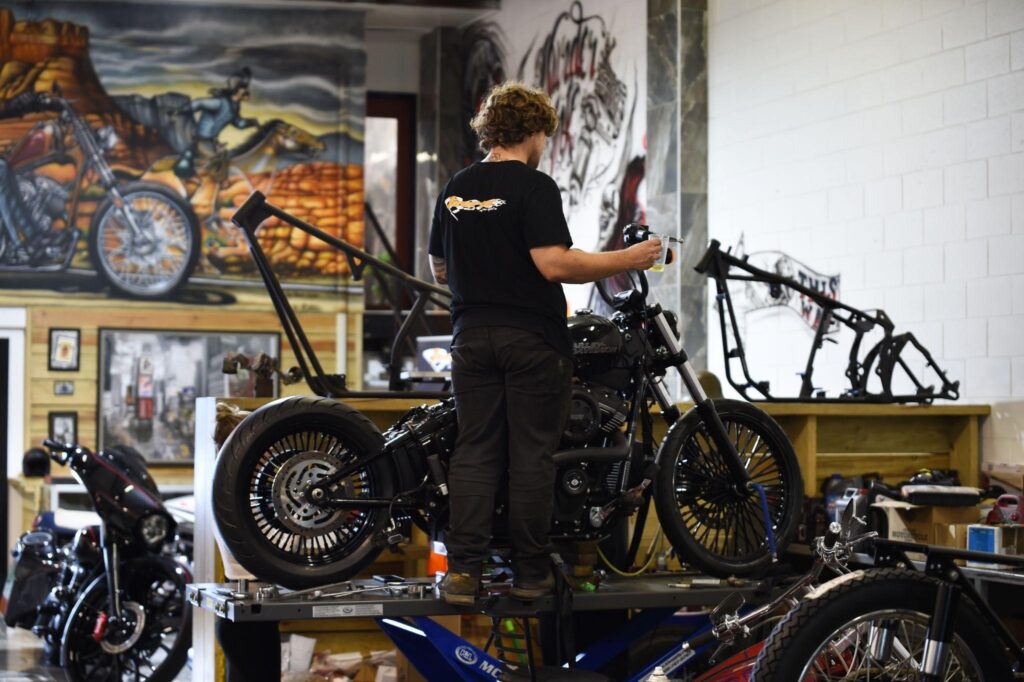
Whether you need a basic service or large-scale repairs, the team at Taverner Motorsports is happy to assist you.
Based on the north side of Brisbane, we offer both regular servicing and repair work for every part of your bike, from brakes to suspension. Taverner will check the brake fluid levels of your motorcycle, change your motorcycle’s brake fluid and take care of any issues we spot along the way before they become major problems.
With 40+ years in the motorcycle industry, the Taverner team has worked on all kinds of bikes. We’re experts in everything from basic servicing to custom builds. And while we bleed your brakes or change your fluid, we can spot the early warning signs of trouble before they have the chance to ruin your ride. With a deep passion for the motorcycle industry, we’ll always give your bike the most dedicated level of care.
If you’d like more information about any of our services, contact the Taverner team and request a free quote.
